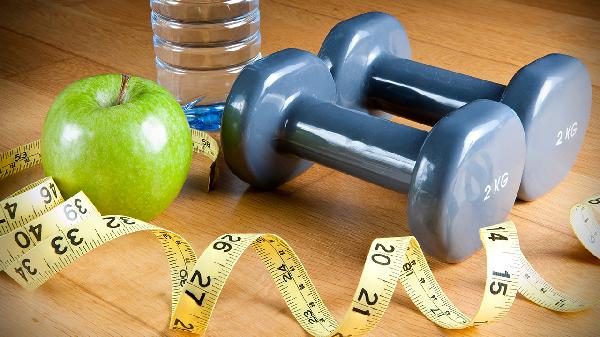the muscle responsible for that coveted six-pack look—along with contributions from deeper core muscles like the transverse abdominis and pelvic floor. The confusion comes from the fact that trainers and fitness enthusiasts often use the term loosely to describe exercises that emphasize the lower abdominal region. But here’s the kicker: you can’t isolate fat loss or muscle growth in just that area. Spot reduction is a fitness fairy tale. What you can do, though, is strengthen your entire core, which includes those hard-to-target lower fibers, through smart, intentional training.
Why the "Lower Abs" Myth Persists
The fitness industry loves buzzwords, and "lower abs" is one that just won’t quit. Part of the reason it sticks around is that people see visible definition in the upper abs first, assuming the lower portion must be a separate muscle group needing special attention. In reality, the rectus abdominis is one long muscle sheet running from your ribs to your pelvis, divided by tendinous intersections (those horizontal lines that create the "six-pack" appearance). The lower fibers are simply harder to engage because they’re often overshadowed by dominant hip flexors and weaker mind-muscle connections. That’s why exercises like leg raises or reverse crunches feel like they’re targeting the "lower abs"—they force those fibers to work harder than usual.
The Core Truth: Holistic Strength Beats Isolation
If you’re chasing a strong, defined midsection, focusing solely on "lower ab" exercises is like building a house and only painting one wall. Your core is a complex network of muscles—rectus abdominis, obliques, transverse abdominis, pelvic floor, and even your lower back—all working together to stabilize your spine, transfer force between your upper and lower body, and maintain posture. Neglecting any part of this system creates imbalances that can lead to back pain, poor movement patterns, or even injury. Instead of fixating on one mythical muscle group, prioritize movements that challenge your entire core in multiple planes of motion: anti-extension (like planks), anti-rotation (like Pallof presses), and dynamic stabilization (like dead bugs).
Mind-Muscle Connection: The Secret Sauce
Before you even start your workout, take a minute to reconnect with your deep core muscles. Lie on your back, knees bent, and place two fingers just below your belly button. Take a slow breath in, then exhale fully while gently drawing your lower belly inward—imagine trying to zip up a tight pair of jeans. You should feel tension under your fingers without holding your breath or clenching your glutes. This subtle engagement is your transverse abdominis (your body’s natural weight belt) and pelvic floor activating. Practice this daily; it’s the foundation for every effective core exercise. Without this awareness, you’re likely letting your hip flexors hijack the movement, which explains why some people do hundreds of crunches with zero results (and maybe a sore back).
Top Exercises for Total Core Engagement
Now for the fun part. These moves prioritize the entire core while emphasizing the often-underworked lower abdominal fibers. The key? Slow, controlled reps with maximal tension. No momentum allowed.
1. Dead Bug: Lie on your back, arms extended toward the ceiling, knees bent at 90 degrees. Exhale as you slowly lower one arm and the opposite leg toward the floor, stopping just before your lower back arches. Inhale to return. This anti-extension move forces your deep core to stabilize while minimizing hip flexor dominance.
2. Hanging Leg Raise (Modified): If strict hangs are too advanced, try lying on a bench gripping the sides for support. Lift your legs straight up to 90 degrees, then lower them slowly—taking 3-4 seconds—until your heels nearly touch the bench. The slower the descent, the more your lower abs scream (in a good way).
3. Reverse Crunch with Slider: Place a towel or slider under your feet, knees bent at 90 degrees. Exhale as you curl your pelvis upward, sliding your feet toward your glutes. The goal isn’t height; it’s compressing the lower abs by posteriorly tilting the pelvis.
4. Standing Pallof Press: Attach a resistance band at chest height, stand sideways, and grip the band with both hands at your sternum. Press straight out, resisting the band’s pull to rotate you. This anti-rotation drill lights up your obliques and deep core while teaching full-body tension.
5. Stir-the-Pot Plank: In a forearm plank on a stability ball, make small circles with your elbows. The instability forces your entire core—especially the transverse abdominis—to fire overtime to prevent wobbling.
Breathing: The Overlooked Game-Changer
Ever notice how your core feels weaker when you’re gasping for air? Proper breathing mechanics are non-negotiable for core strength. During exertion (like lifting your legs in a reverse crunch), exhale fully through pursed lips to engage your deep stabilizers. Inhale during the easier phase (like lowering your legs). This not only protects your spine but also ensures your muscles—not your breath-holding—are doing the work. Pro tip: If you’re turning red and straining your neck, you’re probably holding your breath instead of exhaling.
Nutrition: The Unsexy (But Essential) Factor
dehydration can cause bloating that masks abdominal definition. And no, endless ab workouts won’t "cancel out" poor eating habits. Abs are made in the gym but revealed in the kitchen.
At the end of the day, chasing "lower abs" is missing the forest for the trees. A strong, functional core isn’t about aesthetics—it’s about building a foundation that enhances every movement in your life, from picking up groceries to nailing a deadlift PR. Train smart, eat well, and let the results follow.
























